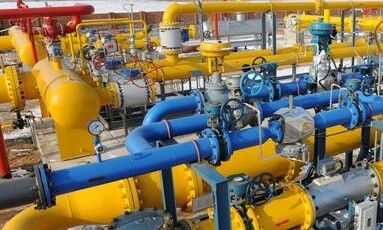Impact of Complex Operating Conditions on Control Valves
Control valves are essential components in industrial control systems. They're used across various industries like oil, chemicals, power generation, and water treatment to control things like flow, temperature, and pressure. But in tough working conditions, control valves can face all sorts of challenges that can affect their performance, efficiency, and lifespan. Choosing the right valve and maintaining it properly is key to making sure it works well in these harsh environments.
Control valves can face all sorts of problems when they're exposed to high pressure, high temperature, corrosive media, or solid particles. These conditions can lead to things like corrosion, cavitation, erosion, uneven thermal expansion, and clogging. Here's a look at some of the ways these issues can damage the valve.
When valves shut off in high differential pressure conditions, the valve plug and seat need to be tightly pressed together to handle the pressure. But when the valve opens, this tight seal can cause friction and wear on the sealing surfaces. This is especially true with hard seals that need higher sealing pressure. This can become a real challenge for control valves in these conditions.
In high-pressure environments, the sealing surfaces can suffer from erosion or cavitation. The intense force of the fluid at high pressure can speed up wear on the sealing materials, which affects the valve's ability to seal properly and remain stable.
High temperatures can make valve components expand. If there's a big temperature difference, the expansion and contraction can become uneven. This problem is worse in electric control valves because of the different shapes and materials of the parts. This inconsistency can affect how the parts fit together at normal temperatures, leading to leaks, sticking, or even the valve seizing up, all of which severely impact its performance.
If the media contains solid particles or fibers, it can cause erosion and clogging in the valve. This can lead to scratching or sticking of the valve plug and seat. It can significantly affect the valve's accuracy and sealing ability, and may even cause it to fail entirely.
When you're selecting a control valve for tough conditions, it's really important to choose the right one. The right valve will help it perform reliably in harsh environments, last longer, and work more efficiently. When choosing a valve, you need to think about factors like operating conditions, the type of media, pressure, temperature, and more. Here are some important things to keep in mind.
If the media contains solid particles, control valves can get clogged. To avoid this, pick valves with simple flow paths and anti-clogging features. Linear control valves aren't ideal in dirty environments because their flow paths are more complex and can easily get blocked. Angle stroke valves, on the other hand, have simpler designs and are better for these situations, especially in angle-connected setups.
For high-pressure differential conditions, choose valves with anti-cavitation and multi-stage throttling features. These valves help spread out the pressure difference, reduce energy loss, and extend the valve's lifespan. This design reduces pressure and minimizes the impact of the fluid on the valve parts, which helps reduce wear and tear on the sealing surfaces and valve body.
When dealing with corrosive media, it's essential to pick control valves made from corrosion-resistant materials. If the temperature is under 200°C and the pressure is below 2.5 MPa, fluoropolymer-lined control valves are a good option, as fluoroplastics offer great corrosion resistance. For DN50 or smaller, single-seated fluoropolymer valves work well, while for larger sizes, fluoropolymer-lined ball valves or butterfly valves are better choices. For temperatures over 200°C or pressures above 2.5 MPa, alloy valves are a better fit to handle the high temperature and pressure.
In high-temperature environments, inconsistent thermal expansion and contraction can cause the valve to stick. To avoid this, use high-temperature butterfly valves designed specifically for flue gas systems. It's also a good idea to separate control and shutoff functions. Control valves usually operate at smaller openings, which means the fluid's erosion and corrosion can affect sealing. Separating control and shutoff functions ensures the shutoff valve will perform well when needed.
In the past, valve selection often focused too much on speed, assuming faster was always better. But too fast an actuation speed can cause harsh impacts between the valve plug and seat, which wears them out faster. When choosing a valve, make sure to pick a speed that suits the specific operational needs. Slowing down the actuation can help extend the valve's service life.
Choosing the right control valve involves considering all the factors in complex operating conditions, like temperature, pressure, and the nature of the media. When dealing with extreme conditions such as high pressure, large temperature differences, corrosive media, and solid particles, it's crucial to select the right valve with a smart strategy. This will help ensure the valve operates smoothly in tough conditions. A good selection boosts reliability, extends lifespan, reduces failure rates, and improves overall system efficiency. So, when making your selection, always consider the operating conditions carefully and choose the right materials, design, and actuation speed to get the best performance and longest lifespan out of your control valve.

